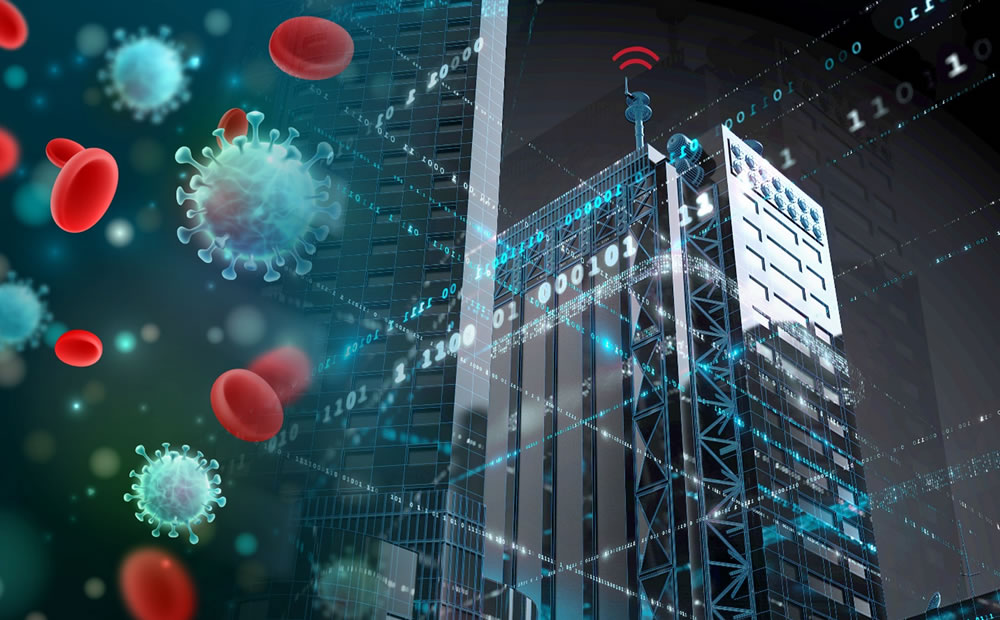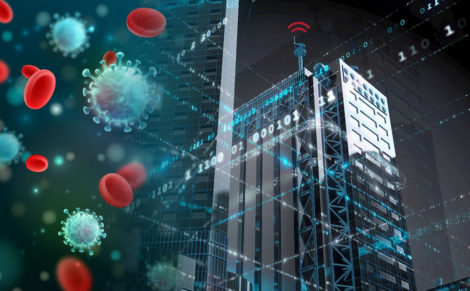COVID-19 Emphasizes Importance of Intelligent Buildings and Integrated Systems
Filed under: Intelligent Buildings
Comments: Comments Off on COVID-19 Emphasizes Importance of Intelligent Buildings and Integrated Systems

 Intelligent buildings are the future of sustainability, operational efficiency and enhanced occupant experience, made possible by the integration of low-voltage applications like Wi-Fi, AV, security, PoE lighting, distributed antenna systems (DAS) and building automation. There’s no doubt that the COVID-19 pandemic has now put even more focus on the need to ensure the safety, health and wellbeing of building occupants and achieve lower operating costs, and the intelligent building market is in a unique position to make that happen. All it takes is integration enabled by the right architecture.
Intelligent buildings are the future of sustainability, operational efficiency and enhanced occupant experience, made possible by the integration of low-voltage applications like Wi-Fi, AV, security, PoE lighting, distributed antenna systems (DAS) and building automation. There’s no doubt that the COVID-19 pandemic has now put even more focus on the need to ensure the safety, health and wellbeing of building occupants and achieve lower operating costs, and the intelligent building market is in a unique position to make that happen. All it takes is integration enabled by the right architecture.
Siloed Systems Won’t Cut It
The pandemic certainly shed light on the benefits of advanced building automation that allowed facility managers to manage systems remotely. It also opened the door for new technologies that make people safer, customers happier and spaces healthier in both public and private sector buildings. Even when a vaccine is widely available, the COVID-19 experience and ongoing concern for future pandemics means that these technologies are here to stay, and we may even see regulations requiring them.
Some of the technologies becoming increasingly popular in the wake of the pandemic include:
- Advanced security cameras with thermal imaging to measure body temperature
- Touchless access control systems to prevent the spread of germs
- Ultraviolet (UV-C) light technology to disinfect spaces and surfaces
- Advanced occupancy sensing to determine the number of people within a given space
- Smart HVAC and building energy management
- Greater remote management capabilities across all building systems
- Mobile-based tracking and crowd control
The traditional approach of deploying disparate low-voltage systems that are designed and managed in separate silos will not cut it when it comes to leveraging these technologies. Moving forward, facility operations and IT departments are going to need to work together to ensure robust, scalable low-voltage infrastructure that supports the design, installation and administration of integrated systems.
For example, thermal imaging cameras to detect elevated body temperature won’t have much impact unless they can communicate with the access control system to respond and prevent a sick individual from entering a space. Integration also means that when a space reaches a certain capacity, occupancy sensors can communicate with the HVAC system to increase airflow or communicate with the UV-C lighting system to ensure a space is void of people before activating potentially harmful virus-killing ultraviolet light. And the UV-C lighting system itself will need to communicate with the access control system to keep doors locked during disinfection.
It Takes the Right Approach
The digital evolution means that emerging COVID-19 era technologies hitting the market will be IP-based devices that connect to and are powered over low-voltage Ethernet-based network infrastructures, enabling communication across systems via common protocols. This capability will also be critical to enabling the collection and analyzing of data from sensors and devices throughout a facility, allowing facility managers to make strategic decisions for both occupant safety and operational efficiency.
At the same time, not every low-voltage system in an intelligent building is the same. Many building automation systems and devices operate at speeds lower than 1 Gb/s and require remote powering below 30 Watts, while others require 10 Gb/s speeds and remote powering levels that reach as high as 100 Watts. This can cause some confusion among building owners, facility managers and network managers when it comes to deploying the supporting architecture.
A building architecture designed to support all converged low-voltage applications – both today and tomorrow – can go a long way to eliminating this confusion. And when it’s backed by experts that can ensure the design and deployment of that architecture in a way that ensures maximum integration and performance, businesses can rest assured that they’ll achieve their vision as strategically and cost-effectively as possible to ensure a return on investment.
That’s where Siemon comes in. As the world shifts into a new norm and intelligent buildings become critical to implementing technologies designed to keep people and spaces healthy, Siemon’s ConvergeIT Intelligent Building Solutions are ready with Digital Building Architecture that supports the design, installation and administration of integrated systems. And it’s all backed by Digital Building Delivery that ensures a robust, scalable standards-compliant infrastructure, from construction planning through implementation and delivery.
To learn more, visit www.siemon.com\convergeit
